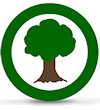about ...
Macclesfield Forest is a working forest located in the east of Cheshire close to Macclesfield and Langley and
Wildboarclough Villages. The forest is owned by United Utilities and has
four reservoirs of which two provide drinking water to nearby Macclesfield
Town.
The area that makes up the forest was once part of the large Royal Forest of Macclesfield, an area
owned by the Earl of Chester that stretched from the Pennines to the
Staffordshire Moorlands and the High Peak area near Whaley Bridge.
The forest includes some broad leaved trees but is largely made up of pine trees.
Until recently the forest was managed with a continuous cover policy by
United Utilities but of late large areas of the forest which was mostly
planted from 1930 to 1950 have been clear felled with the aim of
replanting with native broad leaves.
Ridgegate and Trentabank are the two reservoirs that were built to provide drinking water, Ridgegate dates from
the late 19th century and Trentabank was first declared open by the
Corporation of Macclesfield in 1929 by H.R.H. Prince Henry, Duke of
Gloucester.
Both of the highest points in Cheshire are close by, Shining Tor the
highest at 559 metres can be seen from many areas of the forest
including the Standing Stone area and Shutlingsloe at 509 metres high overlooks the forest
and is a great walk with stunning views.
The peak of Shutlingsloe is known as the
'Cheshire Matterhorn' thanks to its shape and resemblance to the famous
Matterhorn Mountain in Switzerland. The correct spelling is Shutlingslowe
but it is more commonly spelt as Shutlingsloe since being spelt
incorrectly in the 1980's. The origin of the name comes from a Celtic
Tribe the 'Shutta' and Lowe meaning hill or mound.
St Stephen's Church, more commonly known as
'Forest Chapel' is part of the forest area near Standing Stone. A church
was first built here in 1673 but was rebuilt in 1834, the church is known
for its traditional rush-bearing ceremony which is held in August each
year.

The largest Heronry in the Peak District can
be found in the forest and it is home to a number of other animals
including badgers, weasels and a herd of red deer, although you have to be
extremely lucky to see these elusive animals, they are more likely to be
spotted in the early morning.
Any information on this site is provided as a guide and it is recommended
that you check that any details provided are up to date or accurate at the
time of your visit. Please follow the countryside code at all times during
your visit.
If you have any comments or ideas about the website or your experiences in
the Macclesfield Forest please
contact us. No content or photographs to
be used without prior permission, if you wish to use any of the
photographs for commercial purposes please
contact us with full details of your enquiry for a price.


